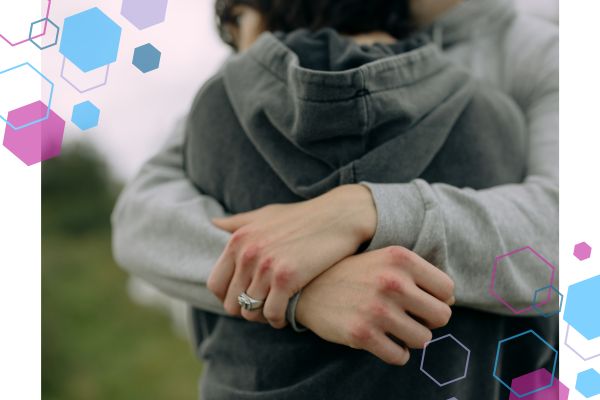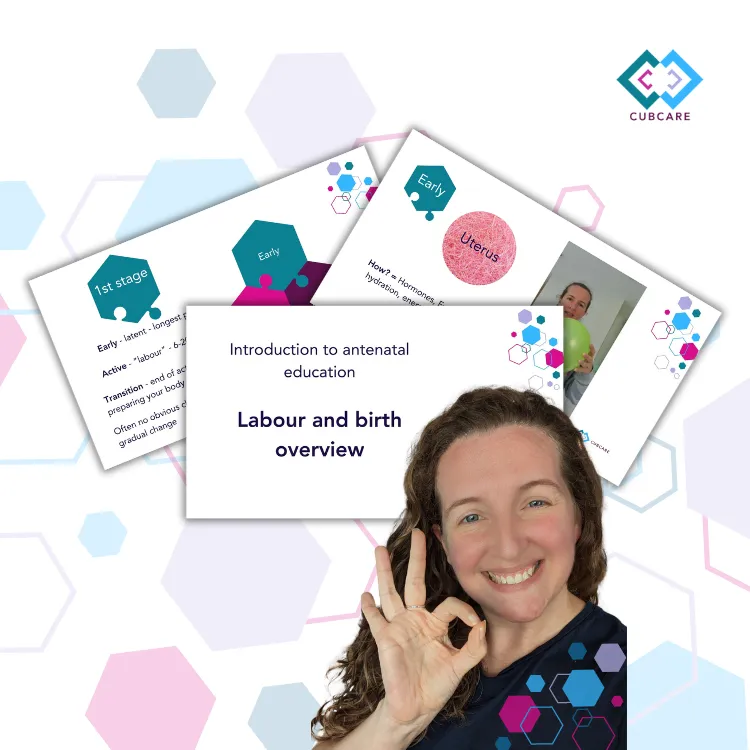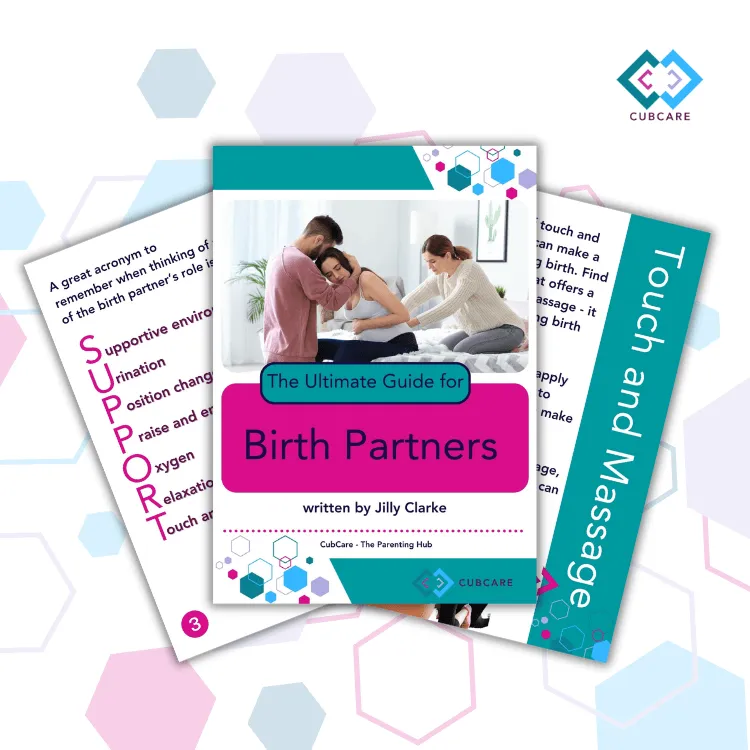We're an award winning Antenatal and Postnatal Education Platform 2025!
(read more here)
CubCare blogs.
From early pregnancy to newborn development.
Advice to help through pregnancy, birth and childhood.
BLOG

Why is oxytocin needed for birth? What is oxytocin in labour and birth?
"In order for our body to produce oxytocin we need to feel SAFE, RELAXED and UNOBSERVED. Quite the opposite of what giving birth usually looks like in films and on television (and increasingly in real life too)." - Jilly Clarke
What does oxytocin do? Why is it so important?
Oxytocin is vital for birth and caring for baby. But what is it?
Quite simply, oxytocin is a hormone released by the pituitary gland that causes contractions of the uterus during labour. Without oxytocin contractions would not happen and baby would need to be born by c-section.
It has an impact on other muscles in the body too, according to a 2021 study, oxytocin can potentially improve cardiovascular health and reduce sarcopenic obesity. But we’re here to talk about birth.
Oxytocin is the hormone of love, and it creates the fuzzy memories of birth. It is vital to promote bonding with your baby and for feeding them too.
Low levels of oxytocin can also contribute to postnatal depression. So it is a really important hormone.

Why is oxytocin important in labour? Do you need oxytocin to start labour?
For labour and birth to proceed as beautifully and naturally as possible we need oxytocin and here is why: In order to give birth biologically, we need contractions. A contraction of the uterine muscles, to push baby down on to the cervix, and then into the world; and to pull the cervix back over baby’s head.
The muscles should work harmoniously together to push the baby out of the cervix and down the birth canal.
The one and only hormone responsible for this process is oxytocin. This wonderful hormone, quite often referred to as the ‘love’ hormone is pretty awesome.
Oxytocin is produced when we laugh, when we have sex, when we breastfeed when you see your baby for the first time. That happy, warm and fuzzy feeling that rushes throughout your body is oxytocin. So it’s pretty obvious that we need oxytocin by the bucket load to give birth.
But in order for our body to produce oxytocin we need to feel SAFE, RELAXED and UNOBSERVED. Quite the opposite of what giving birth usually looks like in films and on television (and increasingly in real life too).

How to boost oxytocin in pregnancy and labour?
In early labour you could sit and watch a funny film, it will help the oxytocin flow. If you are planning a hospital birth, take something that reminds you of home.
My best advice is to take your pillow, a big cosy blanket or scarf. They smell of you and make you feel safe. Plus, they will come in very hand if you need to stay in afterwards!
Some other tops tips:
Massage – get those birth partners working! – this also boosts endorphins, our body’s natural painkiller
Educating yourself – feeling fully prepared for any unexpected turns
Dimmed lights
Candles, fairy lights or projector
Water – warm bath or shower)
Calming music
Home comforts (like a pillow & pictures of loved ones)
Using headphones and eye mask (to help maintain the safe bubble)
Quiet environment
Positive language
Positive birth affirmations
Supportive partner and midwife
Aromatherapy oils (with guidance)
Place of birth – where do you feel safest? This is down to personal choice. Home, birth centre or hospital.
Do not underestimate the power of education. Knowledge is power after all.
What are the disadvantages of artificial oxytocin in labour?
Be careful with artificial oxytocin...
Births that use artificial oxytocin are more intense, contractions are stronger and can lead to more pain and some complications.
Potential Disadvantages
Increased pain: Some people report more intense contractions with artificial oxytocin, leading to increased discomfort during labour. This is due to the brain not recognising the artificial oxytocin and so can't produce pain relieving endorphins.
Tachysystole: This is rapid, frequent contractions that can reduce oxygen supply to the baby, potentially leading to distress for baby.
Uterine hyperstimulation: Excessive contractions can overwork the uterus, increasing the risk of complications like uterine rupture.
Increased risk of intervention: Due to potential complications, there's a higher chance of needing interventions such as forceps, vacuum extraction, or caesarean section.
Reduced breastfeeding success: Some studies suggest a possible link between artificial oxytocin and difficulties with breastfeeding initiation and establishment. This 2021 study noted a reduction in prolactin levels - vital for promoting lactation.
Research published in March 2023 has confirmed that when synthetic oxytocin is given in labour, neither mums nor babies will experience the direct beneficial effects that we see when this hormone is secreted naturally.
Artificial oxytocin acts differently and does not reach the brain – so the beneficial rise in endorphins does not happen in the same way.
Synthetic, or artificial oxytocin is commonly given during labour or just afterwards. It can either be given to speed up contractions or even create them – generally found during an induction.
Almost everybody is given synthetic oxytocin after birth to help speed up the delivery of the placenta. But is this a good idea as standard practice?
Dr Sara Wickman, a high profile expert in the birth world explains:
"Millions of women and babies are exposed to synthetic oxytocin during labour, because this is given to induce and augment (speed up) labour, as well as in medically managed placental birth and to stop bleeding after birth.
In some situations, such as when bleeding occurs after birth, synthetic oxytocin is lifesaving and genuinely warranted.
In many others, including induction and augmentation of labour without good reason, the risks of giving synthetic oxytocin may not outweigh any possible benefits."
All too often the real risks and benefits to procedures are not fully communicated, but can have a huge impact on birth and postnatal journeys. That is why it is SO important that you undertake your own research, or find quality antenatal education.
Are there any benefits to using artificial oxytocin in labour?
Artificial oxytocin can be given to bring on labour and to speed up labour and in certain situations this is helpful and important to ensure the safe birth of baby.
Artificial oxytocin is also given frequently to help prevent, and to stem postpartum hemorrhage so it can be useful to stop
The highlights from a 2022 publication in Science Direct suggest that the use of artificial oxytocin:
Synthetic oxytocin (synOT) is widely used around childbirth.
Effects of synOT on the central nervous system is largely unknown.
The central OT system modulates fear processes including fear memories.
Effects of synOT on maternal postpartum mental disorders are largely under-studied.
SynOT effects on infant mental disorders such as autism are largely un-investigated.
Oxytocin after birth - how is oxytocin important in the postpartum period?
We've all heard of oxytocin, the "love hormone," during labour, but its magic doesn't stop there!
After delivery, oxytocin continues its incredible work in helping to deliver the placenta.
In the weeks after birth it remains high, and continues to be released; helping your body heal, helping you to bond with baby and feed your baby. And to help stave off postnatal depression.
Oxytocin that's released during feeding in particular, helps to shrink your uterus back down to its pre-pregnancy size, reducing bleeding and ensuring a smooth recovery.
But that's not all – oxytocin plays a key role in breastfeeding by triggering the "let-down reflex," releasing that precious milk for your baby and establishing breastfeeding.
Skin-to-skin contact with your baby gives oxytocin a massive boost, creating a warm, fuzzy feeling of love and attachment for both of you.
Remember, our bodies are SO capable. With the trust, the knowledge and the education you CAN have an amazing birth experience.
That's why we have our Antenatal Course (both in person and online), Refresher Antenatal Course (both in person and online), and our Birth Partner course so that everybody can get knowledgeable and confident for birth.
Refresher Antenatal Course in person
Refresher Antenatal Course online
Birth Partner course (included in our Antenatal course)
Antenatal Course in person
Antenatal Course online
Easily navigate to our most popular Blog categories
Download our Freebies

Labour and Birth
Watch our introduction to antenatal education webinar, our labour and birth overview - to start your antenatal education journey. Understanding the process, and what you can do to influence it.

Pregnancy Planner
Free Pregnancy Planner to help you prepare for a little one. Prepare your body, your mind, your finances and your home. Get organised, feel good and prepare for an active, positive birth.

Birth Partner Guide
Your ultimate guide to being the best birth partner during pregnancy, birth and recovery. Learn what you need to do, and what you need to learn to be the best birth partner possible.

Expecting Again Guide
Your ultimate guide to preparing for another birth and an extra baby. Our top tips for navigating pregnancy and birth, and helping your older ones to transition into their new role as a big sibling.
Based in Welwyn Hatfield, offering local pregnancy support and doula services across Hertfordshire: St Albans, Hatfield, Welwyn Garden City, Potters Bar, Stevenage, Harpenden, Hitchin, Barnet, Mill Hill and surrounding areas.
Online antenatal and postnatal education available UK-wide.
© Copyright 2025 CubCare The Parenting Hub. CubCare is operated by The Birth and Baby Company Ltd. Company No. 15655287
Privacy Policy | Terms & Conditions | Medical Disclaimer | Inclusivity and Accessibility

